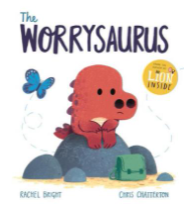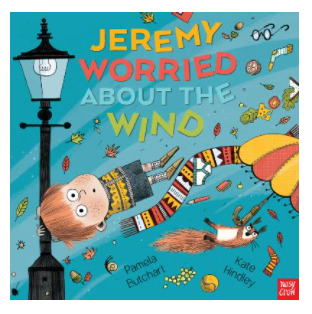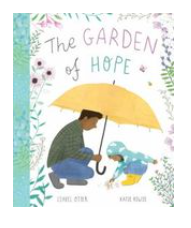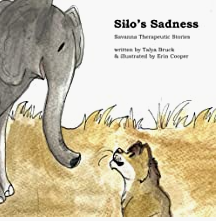Anxiety: Helping Worriers Become Warriors
Do you remember, when you were very little, being afraid of the monster who lived under your bed? Were you terrified at the thought of being taken away by a stranger? Did thunder and lightning scare you? Most of us experienced anxieties like these when we were young. Although fears, worries and anxieties which emerge and dissipate quickly are an entirely normal part of child development, a small proportion of children aren’t able to overcome them. To them, the world is threatening and full of danger. These children are at increased risk of developing one of a wide range of conditions that might jeopardise their ability to learn and to interact socially with other people.
As parents we instinctively want to soothe and protect children and make their pain go away, but the truth is that we can’t always be there to do that, nor should we. In her book ‘Ready or Not: Preparing Our Kids to Thrive in an Uncertain and Rapidly Changing World’ (featured as one of RocketEd’s best books for parents), Madeline Levine warns that a parenting style driven by sheltering children from sadness, discomfort and anxiety can actually do more harm than good. What we must do, she argues, is equip them to manage their worries without parental intervention. The goal shouldn’t be to eliminate anxiety, but to help children manage it independently without adult intervention. In this way, we can help children move from being worriers to warriors who are equipped and able to take on the world by themselves.
Here are 9 ways adults can help:
Demonstrate and model ways of coping with anxiety.
Children learn how to manage situations by observing how the adults around them do. Let them see you manage your anxieties calmly and talk to them about how it feels to overcome something that was difficult for you.Don’t avoid things just because they make a child feel anxious.
When we do this, rather than helping them, we actually reinforce their anxiety. It's hard, but adults need to become more comfortable letting children feel uncomfortable as they work their way through the process of learning how to self-regulate, to manage their own feelings and emotions in a healthy way.
Try to limit or reduce the anticipatory period.
This is the period of time before an anxiety-provoking event. In order to keep anxiety at a manageable level, it's important that adults try to reduce or remove this. Don’t give the child the opportunity to dwell on what might happen for too long beforehand - this may increase their anxiety unnecessarily.
Let the child know that you take their anxiety seriously, but don’t amplify it.
Respect the child’s fears and understand that they might feel overwhelming for them, even if they seem minor to you. Listen, empathise and help them understand what they’re worrying about, while reassuring them that they can face their fears.
Be realistic but positive.
While we should make children aware of the possibility that things might not go to plan, we should balance this by expressing confidence that they’re going to be okay and will be able to manage whatever happens. Let the child know that you wouldn’t ask them to do something you didn’t think they could cope with.
Don’t ask leading questions or reinforce the child’s anxiety.
It's important that adults don’t convey the message, either verbally or non-verbally, that the child should be worried about something. Be conscious of your tone and body language as well as the words you say. Instead of asking questions like, “are you worried about going on the trip?” ask “how are you feeling about going on the trip?” Leading questions can feed into a cycle of anxiety.
Understand the ‘habituation curve’.
One way we try to reduce anxiety is to avoid the thing that has made us anxious. Although this can give relief from unpleasant feelings, long-term this is an unhelpful strategy as it doesn’t reduce the cause of the anxiety. It also risks establishing a vicious cycle of avoidance and anxiety which can be hard to break. Habituation is the process of being gradually exposed to anxiety in order for the anxiety to reduce naturally without avoiding or escaping from it. If we remove children from situations that make them feel worried, we remove opportunities for them to learn that anxiety reduces.
Help anxious children plan ahead.
For some children, having a plan of what to do in an anxiety-provoking situation can reduce uncertainty and their anxiety. For example, what would they do if they weren’t collected from school on time? What steps would they take and how would they handle that situation? Thinking things through in advance can empower children to see that they can take control even if their fears are realised.
Discussing anxiety indirectly, through stories.
A good way to approach the topic of anxiety with young children is by reading them stories about characters who tackle it. Here are some books written for younger children which can help:
‘Ruby’s Worry’ by Tom Percival
‘The Worrysaurus’ by Rachel Bright and Chris Chatterton
‘The Worrying Worries’ by Rachel Rooney and Zehra Hicks
‘My Monster and Me’ by Nadiya Hussain and Ella Bailey
‘Jeremy Worried About The Wind’ by Pamela Butchart and Kate Hindley
‘Blue’ by Britta Teckentrup
‘The Garden of Hope’ by Isabel Otter and Katie Rewse
Series of Savannah Therapeutic Stories, including ‘Silo’s Sadness’ by Talya Bruck









